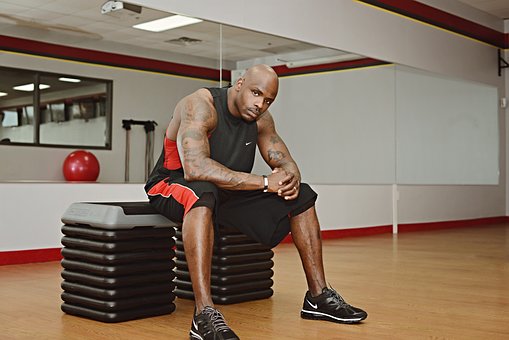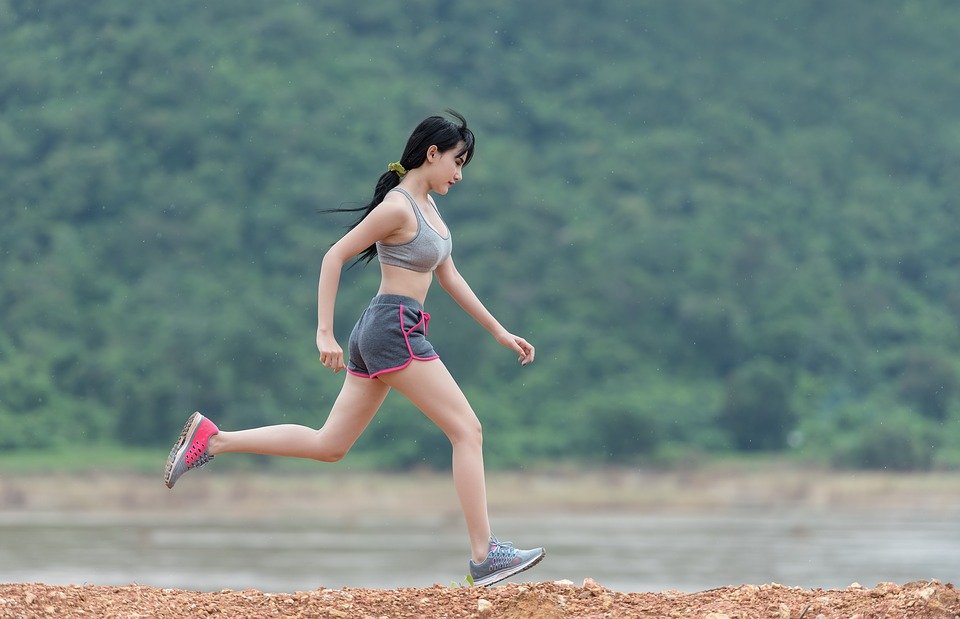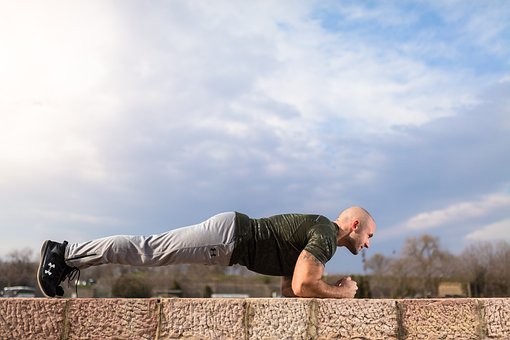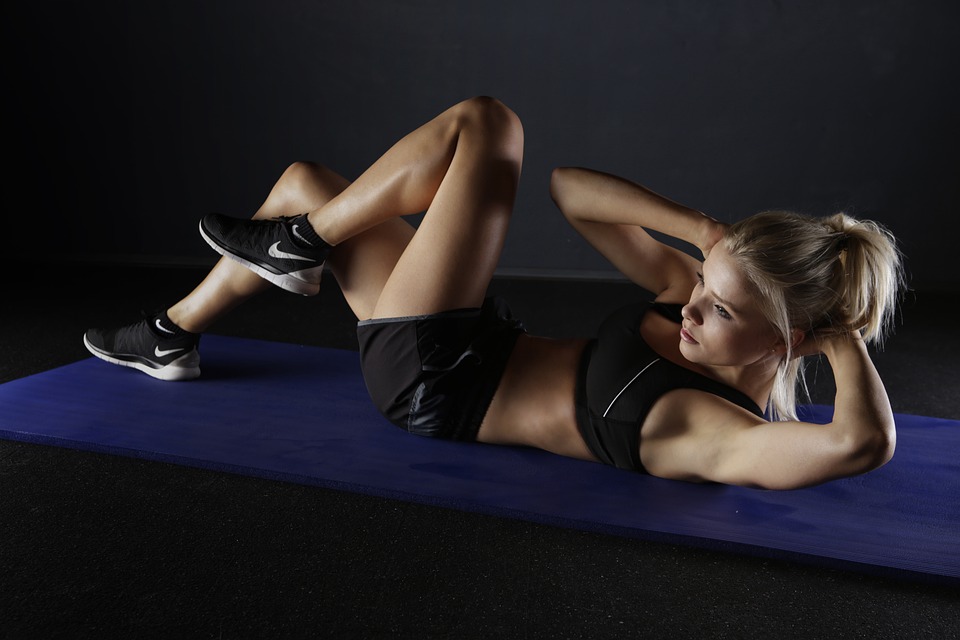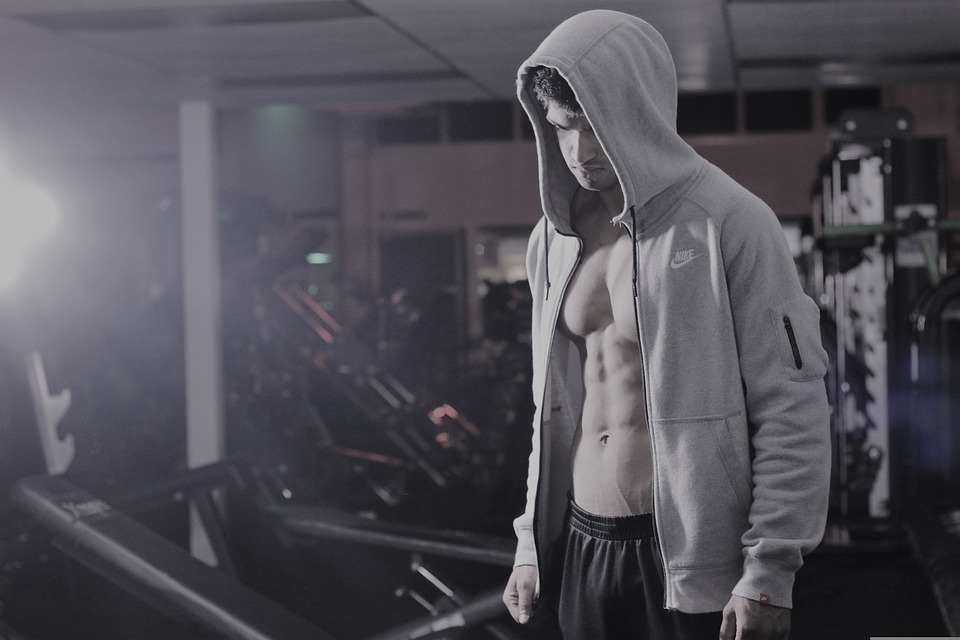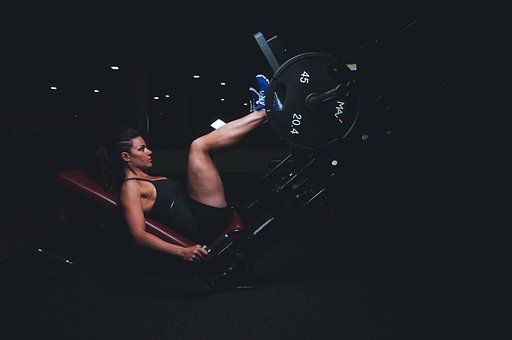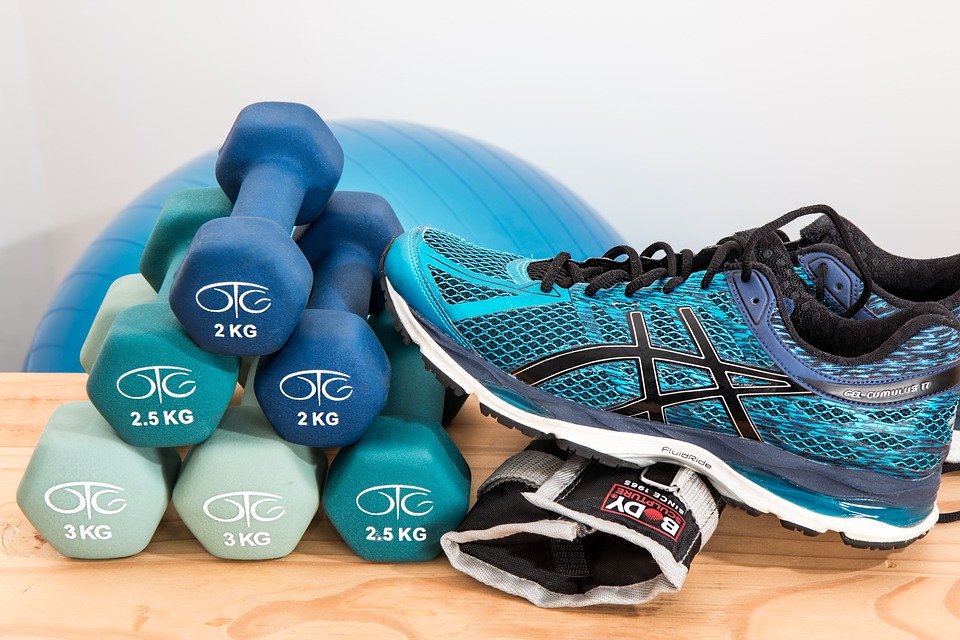
What is Plyometrics?
Plyometric training is a quick, powerful movement that uses the stretch-shortening cycle.
Plyometric training and power training can be used interchangeably. However, not all power training is plyometric training, even though all plyometric training is considered power training. This is because some people use plyometric training to describe a specific movement pattern that has three phases of movement happening quickly. The movement patterns that are categorized in the NASM OPT Model’s Phase 1 would be more accurately classified as power patterns, not plyometric patterns. This is because there is a long pause (isometric) between the eccentric and concentric phases in power patterns.
There is confusion between power lifting and power/explosive training. Power lifting is focused on strength enhancement and development, while power/explosive training is focused on increasing power output.
Being able to generate force quickly and powerfully is important for success in sports. Note the following areas of injury reduction:
- Improved control for varus and valgus movements at the knees during landing
- Enhanced dynamic knee stability during the deceleration phase of landing
- Enhanced anaerobic power and vertical jump height
- Improvement in overall power and change of direction speed in all planes of motion (sagittal, frontal, and transverse)
Plyometric training can be fun and challenging, but it must be introduced, coached, and progressed carefully to avoid injuries.
There is a greater risk of injury when doing unilateral and gravity accelerated patterns such as bounding, hops, depth jumps, and combination jumps unless the person has a solid foundation of stability, motor control, coordinated patterning, eccentric strength, joint integrity, flexibility, and technical proficiency.
The 3 Components Of Plyometric Patterns: The Stretch-Shortening Cycle
Plyometric exercises are made up of three parts: an eccentric phase, an amortization phase, and a concentric phase. The eccentric phase stretches the muscle, the amortization phase prepares the muscle for the concentric phase, and the concentric phase contracts the muscle and releases the explosive force.
Eccentric Component
The muscle is stretched during the eccentric component, which stores potential energy in the elastic elements. This phase can be referred to as deceleration, absorption, loading, yielding, or the cocking phase.
Both examples cited are of the eccentric component in action. In the first instance, when a basketball player bends their knees and lowers their arms before a rebound shot, they are prepping their body for the explosive nature of the jump to come. This is the eccentric component at work as they are slowly and controlled lowering their body before the sudden burst of energy to jump up and grab the ball. The second example, of a baseball player pulling his arm back before a throw to first base, is again the eccentric component at play. The player is cocked and ready to throw the ball with all their might to first base, but before they do, they need to control the downward swing of their arm. So, they pull their arm back, creating tension in their shoulder and lat muscles, before firing the ball to first. This tension is created by the eccentric component as well.
Amortization Component
If this segment lasts too long, the potential elastic energy can be lost. The amortization component is, therefore, a crucial time during which the muscle must transition quickly from overcoming the acceleration of gravity and loading the energy to releasing it.
The shorter the non-countermovement or “pause jump” segment is, the more powerful the results. This is because the movement pattern can be placed upon pure RFD components and minimize the joint impact as well as elastic components.
Concentric Component
After the muscle has been fully lengthened, the elastic energy is released, adding to the tension generated in a concentric muscle contraction. This is where the athlete uses the stored and redirected energy, jumping for the basket or throwing the ball to the first base.
The Benefits Of Plyometrics
Of the many benefits of plyometric training, some of the more recognized are:
- increased vertical jump height
- increased long-jump distance
- Increased strength
- improved running speed, agility, and quickness
- injury reduction
- improved throwing, hitting, striking velocity
Why does the use of plyometrics and power patterns improve power output and performance? Several reasons have been found for the realized benefits of utilizing plyometrics:
- Rapid eccentric movement followed by immediate concentric contraction enhances power output by 10-15%
- Increased explosive strength due to improved rate of force development RFD
- Increased reactive strength due to greater storage and re-utilization of elastic energy
- Improved ability to transfer force through the joints and minimize energy leaks
- Increased active state/force preload (pre-tension developed in anticipation of power output)
- Enhanced Stretch Reflex (Muscle Spindle/greater contraction
- Decreased co-contraction of the antagonist
- Storage and re-utilization of elastic energy (series elastic component: tendon and aponeurosis)
- Desensitization of the GTO
- Enhanced neuromuscular efficiency
Plyometric training can improve athletic performance by helping the athlete to develop explosive power. This type of exercise would benefit non-athlete by helping to improve their coordination and improve the function of their muscles.
Plyometrics is a type of training that focuses on how the body responds to sudden changes in the surface. This can include things like quickly stepping off a curb, or rapidly changing direction when walking a dog on a leash.
Start with exercises that build stabilization muscles, even if you have to start with simpler versions of the exercises like stepping up and down from a low box or bench.
As you become more physically fit, you can start doing more challenging exercises, like jumping jacks, lunge jumps, or tuck jumps.
Reminder About The 3 Components
Plyometric exercises are based on three components: eccentric, amortization, and concentric. The eccentric component stretches the muscle, the amortization component focuses on dynamic stabilization, and the concentric component concentrically contracts the muscle.
There are many exercises which are Plyometric exercises but people do not know about them. These exercises are safe and people should gradually increase the level of these exercises from easy to complex and from stable to unstable. People should also increase their weight from body weight to loaded.
8 Powerful Plyometric Bodyweight Exercises for Strength and Speed
- Plyo push-up
Do a regular push-up, but as you reach the top explode up so that both hands leave the ground and you can quickly clap them together before returning to the starting position.
To make it easier, start by dropping to your knees and pushing up with a clap. Once you get comfortable with that, move to your toes.
- Squat thruster
Start in a high plank position with your feet together. Jump your feet forward into a wide squat, and bring your hands off the floor into a prayer position or in front of your chest.
Maintain a straight back, with your shoulders down and chest out, when you are in the low squat. Take a pause for a second, then put your hands on the floor and jump your feet back into a high plank position. As quickly as possible, repeat this sequence.
- Plyo lateral lunge
From a standing position, bring your feet close together and your arms to your sides. Next, brace your core and send your hips backward. Once you’ve done that, step out to the right with your right foot, bending your right knee while keeping your left leg straight. You should now be in a low lunge position.
Keeping your arms either straight in front of you or in a prayer position can help you maintain balance while in the low lunge.
In a continuous movement, push off your right foot and hop your right foot to where your left foot is as you send your left foot out. Come down into a low lunge on your left side. It should look like a side step with a hop. Continue doing this on both sides.
- Reverse lunge with knee-up
Step your right foot back and lower into a reverse lunge, making sure to keep your feet hip-width apart. All of your weight should be on your left foot, so engage your glutes and brace your core.
Do a low lunge, and as you jump off your left foot, bring your right knee to your chest. Land softly on your left foot and immediately step back into a low lunge to repeat.
- Box drill
Slightly bend the right knee and hop quickly as high as possible to the left, maintaining good balance. Continue this pattern, hopping as fast as possible while maintaining good technique, for 1 minute. Start by standing on your right foot with your knee bent, then jump to the right and land on your right foot. Bend your right knee and jump quickly to the left as high as you can. Keep doing this for one minute.
While staying on your left leg, jump to the left, then forward, and then back. Then switch legs and reverse direction. Make sure your jumps are quick and small.
Do the exercise with both feet and try to jump quickly and in time with the others.
- Frog squat jump
Start by standing with your feet slightly wider than shoulder-width apart, with your toes turned out slightly. Then, squat down deeply, touching your hands to the floor. Finally, jump up explosively, like a frog, landing softly on the balls of your feet. Quickly repeat, focusing on getting as much vertical height as possible on each jump.
- Long jump
Do you want to try the classic Olympic event? For this explosive lower-body move, stand with feet hip-width apart and crouch into a squat position with your arms back.
To execute a proper jump, start with your feet together and swing your arms forward to help you propel upwards. Land on the balls of your feet, making sure to keep both knees bent upon impact.
Continue jumping forward if there is space, without taking a break between jumps.
- Burpee with tuck jump
Perform a burpee, but upon standing at the end, rather than completing a normal hop, jump and bring both knees up high to your chest before softly landing on the balls of your feet to transition into the next burpee.
How To Teach Good Plyometrics Technique
The key to teaching good technique is to start with the basics of landing, absorbing, and catching, and then only moving on to more difficult exercises once the proper form has been mastered.
Some simple mantras to remember are that you must “Load before you can explode” and “train slow, move slow, train fast, move fast, but if you can’t do it slowly, you can’t do it fast.” Some coaching tips to improve jump-landing mechanics include:
Phase 1
It is important to have the correct body position and mechanics, as well as landing and absorbing the impact, during this phase.
- Instructing individuals how to properly hip-hinge and land is critical. From a standing position, using a dowel or light bar and maintaining good spinal orientation as the body hinges and lowers (i.e., 3 points of contact with the bar – sacrum, thoracic spine, and back of the head) can be helpful. This movement, versus a more quad-dominant lowering position, reduce knee and hip shearing forces while also loading (eccentrically) the gluteus maximus to facilitate more powerful unloading (concentric contraction) during the triple extension phase (ankle, knee, and hip).
- Further, athletes must be instructed about ground contact and absorption. Keeping it simple, since the priority is force absorption to reduce impact and joint wear and tear, the cues keep it quiet and keep it soft. The less noise/sound on impact, the better. A standard error is the “heel slap.”
If someone is struggling to keep their heel from impacting the ground and making noise upon landing, it means they are not exerting enough effort or are unaware of the problem. This increases the level of impact forces. If the person cannot fix the problem, they should reduce the intensity of their activities until they are able to land quietly on their foot while keeping a credit card’s worth of space under their heel.
- Arm swing must be taught and not overlooked. It is key to potentiating power and is often misunderstood by athletes. Arms need to be loaded back in hyperextension early and released into flexion with maximal effort.
- LPHC-knee-toe alignment is vital. Getting athletes to keep these priority segments aligned in the sagittal plane (allowing for hip- shoulder-width foot placement based on jumps) has been shown to decrease injury and improve force production due to less lost energy or force leaks.
- Emphasize upper extremity alignment and head position (eyes-ups, head aligned with the spine) using cues like nose-over-toes or chest-over-knees at the bottom of the eccentric loading phase.
- Keep the patterns primarily uniplanar and directional in this phase.
Phase 2-3
Try adding in more dynamic movements that will change the planes and directions, as well as increase the force of gravity and impact.
- Introduce two planes or directions of movement into patterns
- The introduction of barriers to jump over and variable planes and increased movement speeds due to gravity and countermovement patterning will challenge the athlete to gain another level of motor control and absorption and the ability to change direction and release the stored energy to a greater degree.
- When ready, begin coaching your athletes to reduce the amortization phase or transition between the lowering and rising phases to harness elastic energy into motion (minimizing potential energy leaks).
- Maintain all postural and landing considerations from previous phases.
Phase 4 – 5
To increase the effectiveness of the stretch-shortening cycle, progress to movements where you first do a small jump before a larger jump. This is what most people think of as “true plyometrics,” where the focus is on quickly switching from landing (eccentric) to taking off (concentric).
- Introduction of bounce or double contact.
- Emphasize minimizing ground contact time.
- Maintain all postural and landing considerations from previous phases.
- Introduce alternating limb patterns.
- Introduce 2+ planes and/or directions of movement.
- Introduce external load.
Phase 6
The goal of this phase is to take the skills learned in the weight room and apply them to real-world scenarios on the playing field.
- Introduce multiple loading variables and skills into sequences (i.e., MB throws to barrier jumps to sprints.)
- Introduce repeating patterns with maximal elasticity demands (depth jumps, high hurdle jumps, etc.)
- Introduce reactive/chaotic scenarios.
- Hybrid variations of takeoffs and landings (1 – 2 leg and 2 – 1 leg.)
To sum up, although plyometrics can be enjoyable, you should take the time to prepare your body for them physically. Once people have mastered the technique and can cope with the forces involved in landing after a jump, they can start to gradually increase the intensity of the exercises.

